Design Mystery: Why Do Pineapples Sprout Up in Home Design?
http://decor-ideas.org 01/08/2014 03:23 Decor Ideas
History says Christopher Columbus launched the pineapple into widespread popularity when he “discovered” it on his second trip to the New World. He and his crew allegedly found the prickly fruit placed beside tribal cooking pots in Guadeloupe. The natives called it “anana,” but the seafarers renamed it “pineapple” because it resembled a pinecone and — to them — tasted like an apple. They brought it back to their homeland, unleashing a culinary lust for its sweet yellow flesh. How it migrated from Caribbean cooking pots to American architecture is the subject of today’s design mystery.
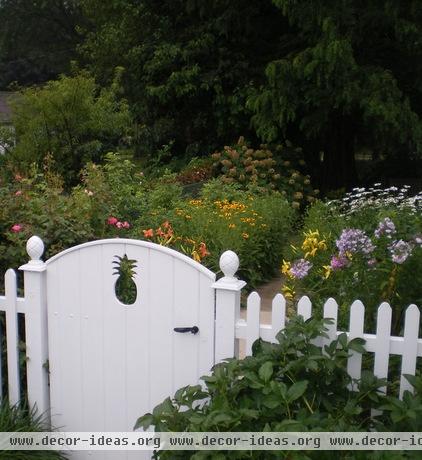
In Britain and particularly colonial America, the pineapple as a symbol generally means hospitality or welcome. According to an academic paper titled “The Hospitable Pineapple” by professor Michael Olmert, it can also be associated with Christian beliefs, as pineapple plants die to produce fruit. English architect Christopher Michael Wren (1632–1723) put pineapple finials on the cathedrals he designed.
Olmert traces the pineapple’s association with welcome and hospitality to the British West Indies, where in the 1600s and 1700s planters would leave a fresh pineapple at the gates of their mansions when they were home and open to receiving guests.
An echo of that tradition is seen in this gate by Wallace Landscape Associates in Pennsylvania.

The pineapple craze took hold briefly in Europe, but it was nothing like the enthusiasm early Americans showed for the fruit. Olmert writes that in America, “there was a century of devotion to the pineapple that would not be eclipsed until the decorative arts of the Federal period began to displace the forms in favor of Greek and Egyptian motifs.”
The large stone pineapples on this gate, by Miami architect Z.W. Jarosz, recall that time in history when carved wood or other pineapples announced the hospitable nature of a home.

Pineapples were scarce, because most of them rotted in transit from South America. Journalist Hoag Levins, who covers historical matters extensively, writes: “Only the speediest of ships and good weather could get a whole pineapple to Boston, Philadelphia, Annapolis or Williamsburg. If a hostess had one, it said something about her ingenuity as well as her rank.” The fruit was so sought after that confectioners in these cities would rent them by the day.
With that much social significance laid on the fruit, it was a small leap to its association with warm welcome. The meaning of the contemporary glass and metal light fixtures is clear on the gracious porch of this home by the architects at The Middleton Group in Charleston, South Carolina.
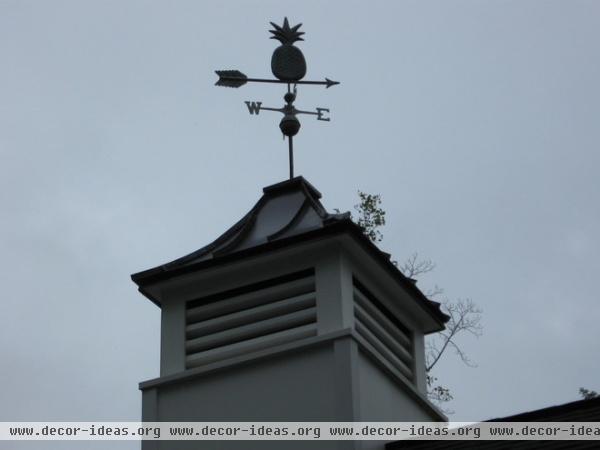
According to Levins, in early America hosting visitors was the primary form of recreation in the entertainment-challenged colonies. A hostess would set up elaborate displays on the dining room table, and often the crowning glory would be a nearly-impossible-to-come-by pineapple.
In this home, by McSpadden Custom Homes of South Carolina, a pineapple weather vane crowns a building in a similar way.
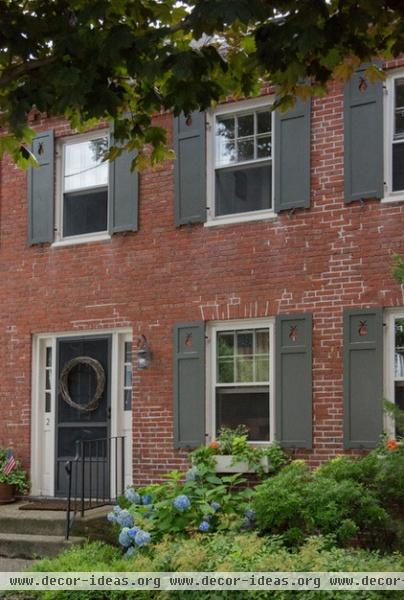
From the dining table, the pineapple migrated to architectural ornaments of all kinds, such as doors, finials, pediments and shutters, as seen on this historic Massachusetts townhouse, renovated by Cummings Architects.
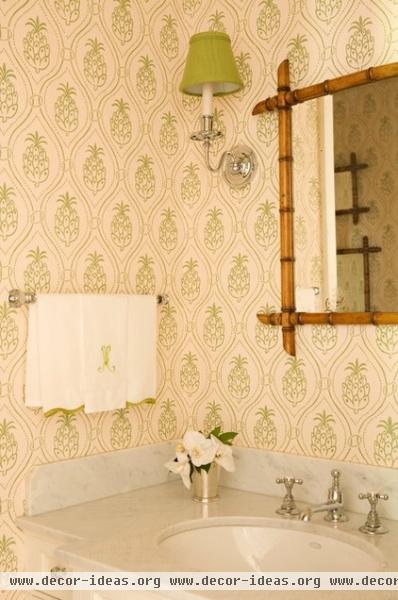
Tim Bottorff, head librarian at the Universal Orlando Foundation Library at Rosen College, reports that pineapple symbols began to crop up inside as well, on bedposts, tablecloths, napkins and wallpaper. A modern-day example is seen on the walls of this bath in Brentwood, California, by West Hollywood designer Elizabeth Dinkel.
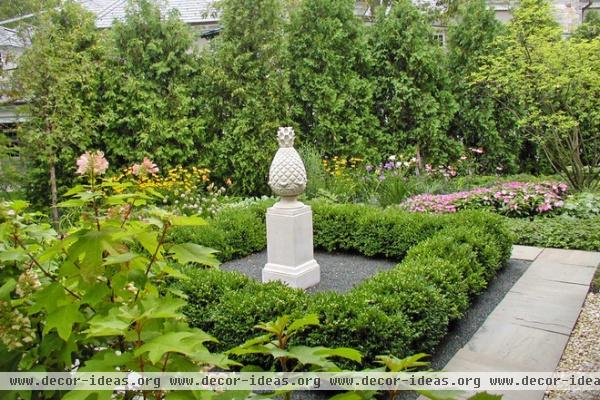
When the British figured out how to grow the plant in hothouses and it was introduced to fields in Hawaii, it became easier to obtain. But architecture and decorative arts will long record it as an exotic and luxurious welcome.
Show us: Does the pineapple motif appear in your house?
Products: Add the sweet stuff to your own home
Related Articles Recommended












